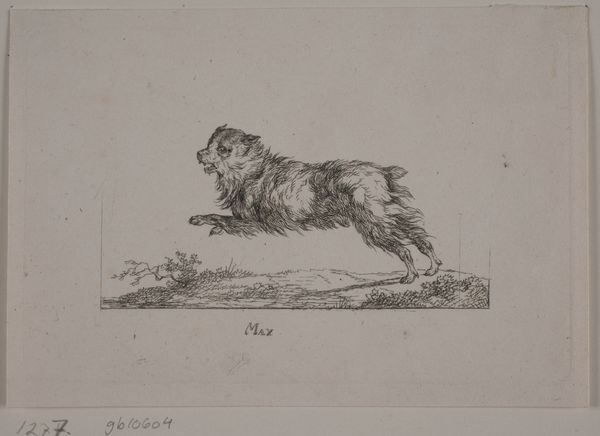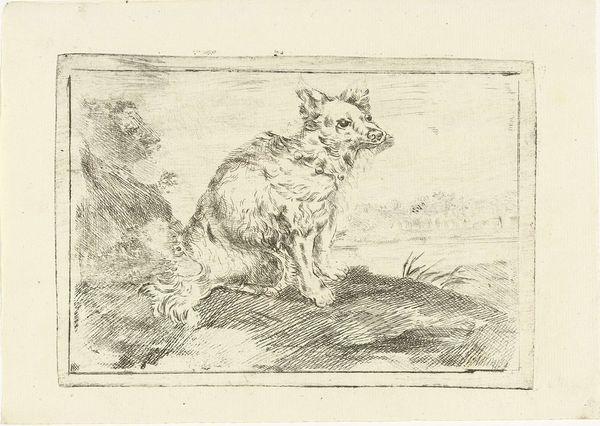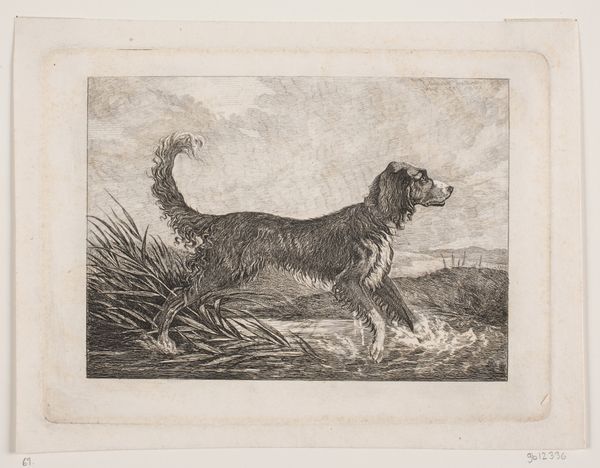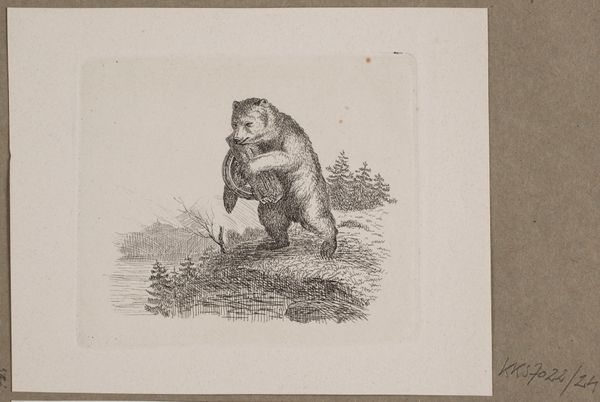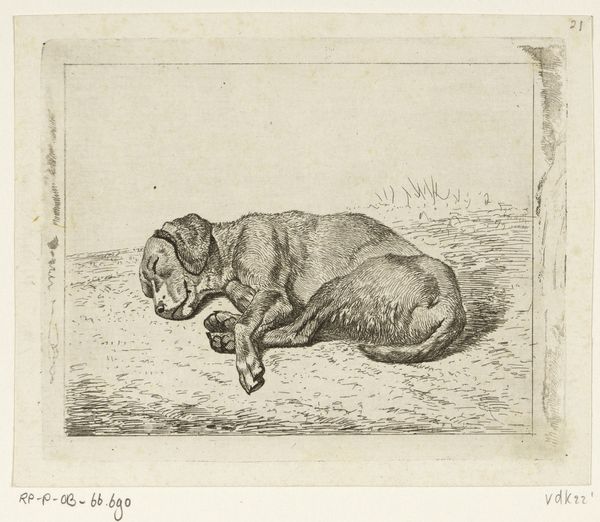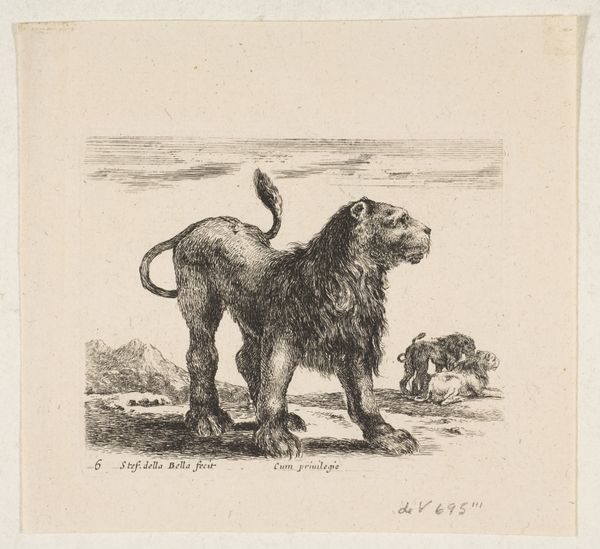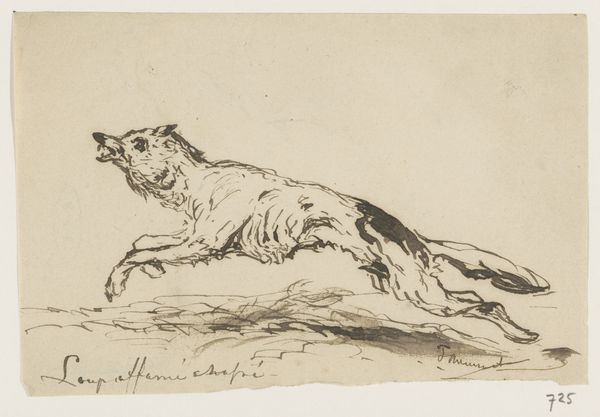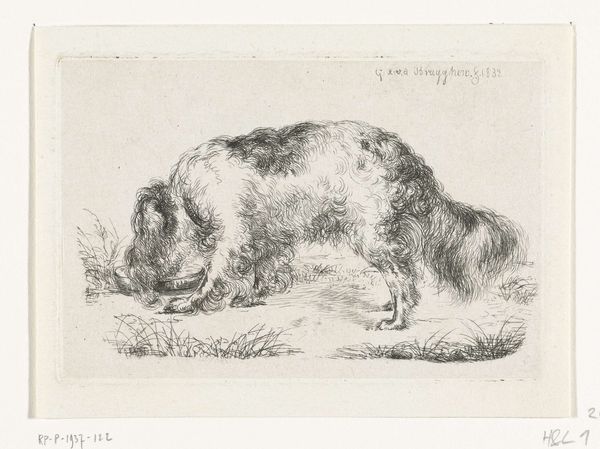
drawing, print, engraving
#
drawing
#
animal
# print
#
romanticism
#
engraving
Dimensions: 80 mm (height) x 124 mm (width) (plademaal)
Curator: Look at this compelling engraving. It's titled "Max, løbende hund," or "Max, Running Dog," created in 1819 by Christian David Gebauer. Editor: Immediately, I notice the incredible energy captured in those simple lines. It’s not just a static portrait; it's a study of movement. You can almost hear the dog panting. Curator: Absolutely, and the medium itself, engraving, speaks to a specific socio-economic context. Prints like these were relatively accessible. What could its role have been? As pedagogical tool, popular collectible? Editor: Well, think about the Romantic era, where there's an intense focus on emotion and nature. Animals often symbolize freedom and instinct, challenging the constraints of society. What statements do you think an image like this might make? Curator: And, if this piece functioned as a drawing or print, considering its likely production method tells us how the artist utilized the tools and workshops of his time, as it probably depended on labor from technicians outside the artists studio to edition it and get it ready for the market. The sharp lines and meticulous detail demonstrate Gebauer's technical skill but also reflect his involvement with the artisan culture. Editor: True. Perhaps there's a deliberate tension between the artistic 'high art' status and its wide circulation as a print, available for everyday consumption in a way an oil painting wouldn't be. It reflects the rising influence of the middle class on artistic tastes and imagery. What sort of market contexts are reflected in its distribution? Curator: Precisely. Moreover, the choice of depicting a dog - likely a domesticated animal that was more readily kept at the time, might imply that ownership, class or status are connected to a burgeoning market for such things at that moment in time. I also find interesting the composition of this dog hovering or jumping across what appears to be a sort of border, that seemingly is rendered but is equally incomplete as to indicate the ground the animal is ostensibly moving across. Editor: I agree! It certainly brings us to think more carefully about how images play active social roles that surpass their aesthetics or their function as simple markers of emotion in Romanticism. Curator: Exactly. Looking closer allows us to reconsider its role in mediating socio-political ideas of class, consumption, and of art itself! Editor: A beautiful piece for reflecting on the interplay of art, society, and emotion!
Comments
No comments
Be the first to comment and join the conversation on the ultimate creative platform.
